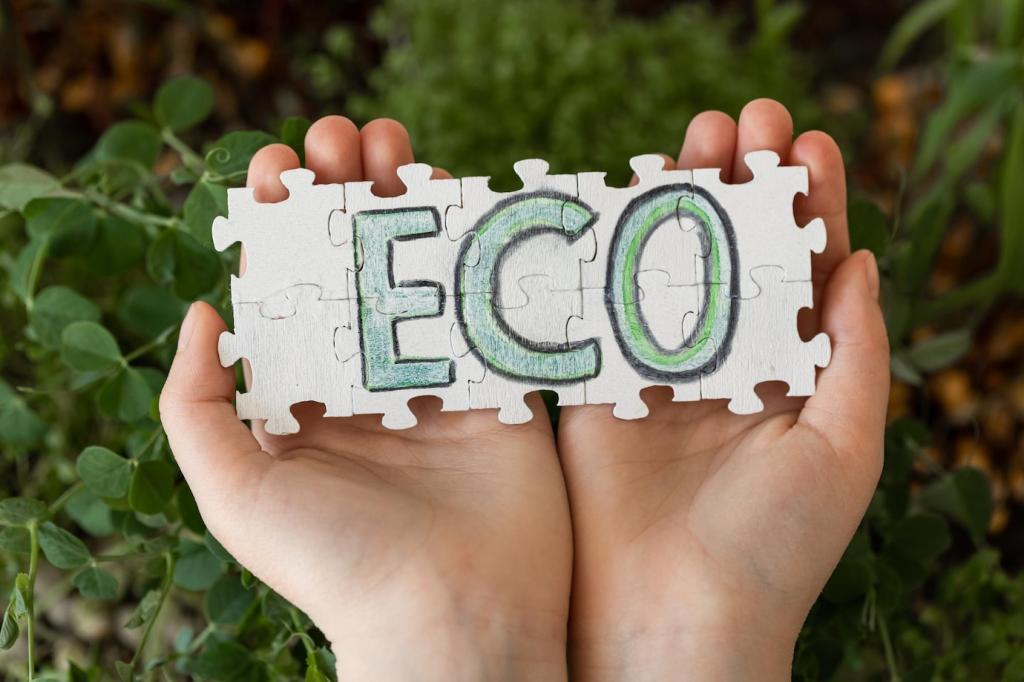Zero-Waste Living Spaces: Design a Home That Leaves Nothing Behind
Foundations of Zero-Waste Home Design
Rethinking Materials from the Start
Choose reclaimed wood, salvaged fixtures, and non-toxic finishes that extend lifespan while preventing future waste. Favor modular furniture with replaceable parts and timeless aesthetics. Ask manufacturers about repairability and spare components, and celebrate provenance—every second-life material carries a story that enriches your zero-waste living spaces.
The Room-by-Room Audit
Walk your kitchen, bathroom, closet, and office with a notepad. Identify disposables you can replace with reusables, and note single-purpose gadgets to donate. Track what actually ends up in your bin for two weeks, then target root causes. Comment with your top three waste culprits and we’ll suggest zero-waste swaps.
A Story: The Jar That Changed a Kitchen
One family kept a single quart jar for monthly landfill waste. Week one overflowed. By week three, they added composting, refills, and cloth napkins. A neighbor noticed, joined their routine, and the jar became a conversation piece—proof that zero-waste living spaces grow through visible, shared experiments.
The Circular Kitchen
Composting Made Simple
Set up a countertop caddy, a backyard bin, or a worm farm for apartments. Balance browns and greens, and freeze scraps to avoid smells. If your city offers collection, use it; otherwise, start a building swap. Compost turns kitchen waste into soil, powering truly zero-waste living spaces.
Bulk Buying and Storage Systems
Bring jars or cloth bags to bulk sections for grains, spices, and snacks. Label tare weights, track refill dates, and store in clear containers for visibility. A tidy, transparent pantry reduces duplicates and food waste. Share your favorite bulk store finds, and tag us when you reorganize shelves.
Appliance Longevity and Repair Culture
Before replacing, clean gaskets, sharpen blades, and replace worn seals. Keep a small toolkit, download manuals, and join local repair cafés. Track maintenance dates on the fridge. Extending appliance life prevents e-waste and keeps zero-waste living spaces aligned with conservation, not constant consumption.
Low-Waste Bathroom Rituals
Use dissolvable tablets for hand soap and cleaners, and set up a simple refill corner underneath the sink. Keep a funnel, labels, and measuring cup handy. Concentrates shrink packaging drastically, while consistent refilling builds rhythms that anchor your zero-waste living spaces every single week.
Upcycling and DIY That Actually Works
Source solid wood pieces with good bones. Sand safely, choose low-VOC finishes, and replace hardware rather than whole units. Avoid fragile particleboard when possible. A thoughtful flip prevents landfill trips and adds character, making zero-waste living spaces feel uniquely yours and beautifully resilient for years.


Upcycling and DIY That Actually Works
Turn jars into pantry canisters, tins into planters, and fabric scraps into quilted cushion covers. Use food-safe seals when necessary and plan modular patterns for easy repair. Each upcycle keeps materials looping, transforming clutter into utility within your zero-waste living spaces with delightfully personal flair.
Minimalism with Purpose, Not Aesthetic
The Two-Loop Declutter Method
Create a keep-and-repair loop and a community loop for donation, lending, or swapping. Label boxes clearly and set weekly appointments. By channeling items back into use, you reduce landfill pressure and build local connections that power zero-waste living spaces beyond your front door.
Wardrobe Without Waste
Move toward a capsule closet, prioritize timeless fits, and learn basic mending. Host swap nights and tailor beloved pieces. Track wear counts before buying. A thoughtful wardrobe slashes packaging and returns, keeping your zero-waste living spaces aligned with sufficiency and genuine personal style.
Digital Declutter, Physical Impact
Fewer devices, better maintained, reduce e-waste. Unsubscribe from promotional emails that drive impulse purchases. Back up, repair, and extend life before upgrading. Responsible tech habits protect resources and keep zero-waste living spaces calm, focused, and free from cords and chargers that multiply unnecessarily.

This is the heading
Lorem ipsum dolor sit amet, consectetur adipiscing elit. Ut elit tellus, luctus nec ullamcorper mattis, pulvinar dapibus leo.

This is the heading
Lorem ipsum dolor sit amet, consectetur adipiscing elit. Ut elit tellus, luctus nec ullamcorper mattis, pulvinar dapibus leo.

Community, Policy, and Sharing Culture
Host a lending shelf, set up a shared calendar for tools, and label kits with repair notes. A single drill serving ten households prevents nine purchases. That network effect amplifies zero-waste living spaces, turning private habits into public infrastructure that neighbors can rely on confidently.
